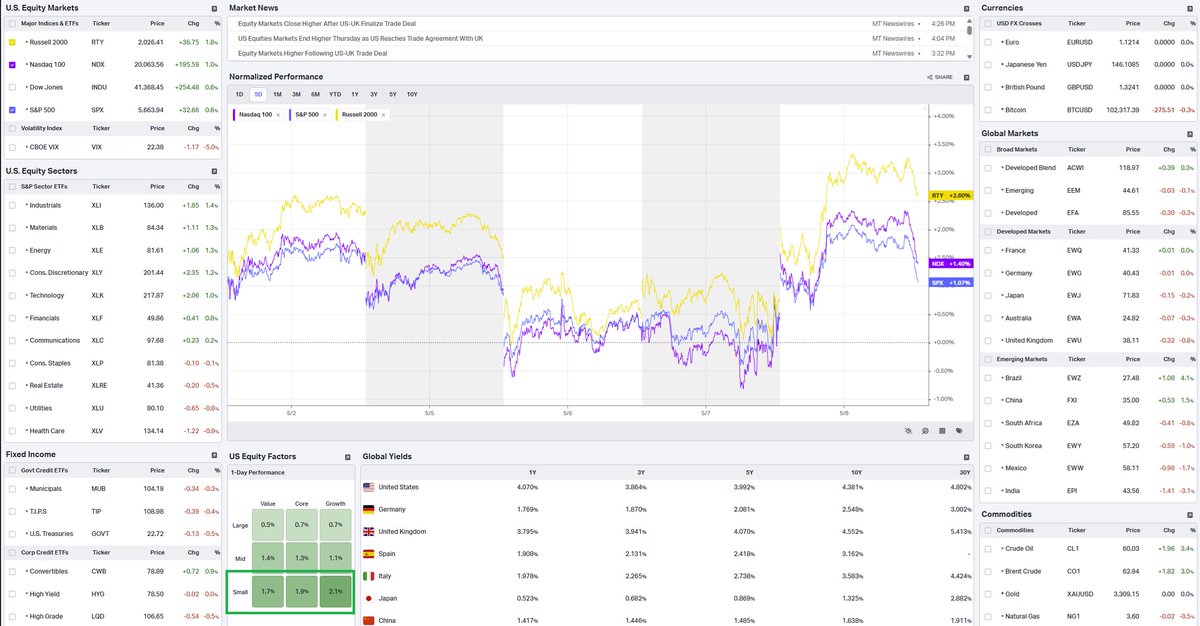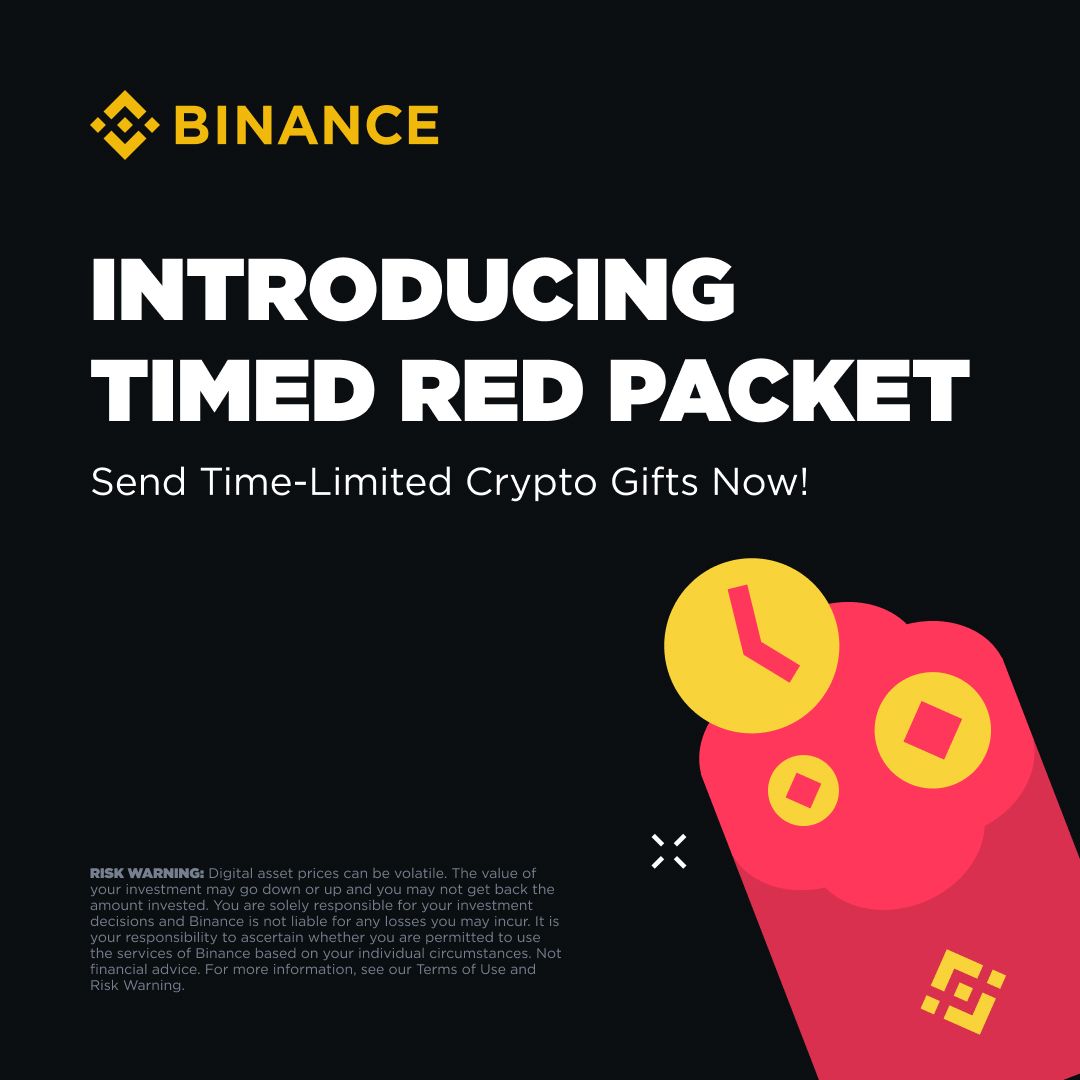
MDT
Measurable Data Token koers
$0,020050
-$0,00507
(-20,19%)
Prijsverandering voor de afgelopen 24 uur

Wat vind je vandaag van MDT?
Deel je mening hier door een duim omhoog te geven als je je bullish voelt over een munt of een duim omlaag als je je bearish voelt.
Stem om resultaten te bekijken
Disclaimer
De sociale inhoud op deze pagina ("Inhoud"), inclusief maar niet beperkt tot tweets en statistieken die door LunarCrush worden verstrekt, is afkomstig van derden en wordt alleen voor informatieve doeleinden geleverd "zoals deze is". OKX geeft geen garantie voor de kwaliteit of nauwkeurigheid van de Inhoud en de Inhoud vertegenwoordigt niet de standpunten van OKX. Het is niet bedoeld om (i) beleggingsadvies of een beleggingsaanbeveling te geven; (ii) een aanbod of verzoek om digitale bezitting te kopen, verkopen of te bezitten; of (iii) financieel, boekhoudkundig, juridisch of fiscaal advies. Digitale bezittingen, waaronder stablecoins en NFT's, brengt een hoog risico met zich mee en kan sterk fluctueren. De prijs en prestaties van de digitale bezittingen zijn niet gegarandeerd en kunnen zonder voorafgaande kennisgeving worden gewijzigd.
OKX geeft geen beleggings- of vermogensadvies. Je moet zorgvuldig overwegen of het verhandelen of bezitten van digitale bezittingen voor jou geschikt is in het licht van je financiële toestand. Raadpleeg je juridische, fiscale of beleggingsadviseur als je vragen hebt over je specifieke situatie. Raadpleeg voor meer informatie onze Gebruiksvoorwaarden en Risicowaarschuwing. Door gebruik te maken van de website van derden ('TPW'), ga je ermee akkoord dat elk gebruik van de TPW onderworpen is aan en beheerst wordt door de voorwaarden van de TPW. Tenzij uitdrukkelijk schriftelijk vermeld, zijn OKX en haar partners ("OKX") op geen enkele manier verbonden met de eigenaar van de exploitant van de TPW. Je gaat ermee akkoord dat OKX niet verantwoordelijk of aansprakelijk is voor verlies, schade en andere gevolgen die voortvloeien uit jouw gebruik van de TPW. Houd er rekening mee dat het gebruik van een TPW kan leiden tot verlies of vermindering van je bezittingen. Het product is mogelijk niet in alle rechtsgebieden beschikbaar.
OKX geeft geen beleggings- of vermogensadvies. Je moet zorgvuldig overwegen of het verhandelen of bezitten van digitale bezittingen voor jou geschikt is in het licht van je financiële toestand. Raadpleeg je juridische, fiscale of beleggingsadviseur als je vragen hebt over je specifieke situatie. Raadpleeg voor meer informatie onze Gebruiksvoorwaarden en Risicowaarschuwing. Door gebruik te maken van de website van derden ('TPW'), ga je ermee akkoord dat elk gebruik van de TPW onderworpen is aan en beheerst wordt door de voorwaarden van de TPW. Tenzij uitdrukkelijk schriftelijk vermeld, zijn OKX en haar partners ("OKX") op geen enkele manier verbonden met de eigenaar van de exploitant van de TPW. Je gaat ermee akkoord dat OKX niet verantwoordelijk of aansprakelijk is voor verlies, schade en andere gevolgen die voortvloeien uit jouw gebruik van de TPW. Houd er rekening mee dat het gebruik van een TPW kan leiden tot verlies of vermindering van je bezittingen. Het product is mogelijk niet in alle rechtsgebieden beschikbaar.
Measurable Data Token marktinformatie
Marktkapitalisatie
Marktkapitalisatie wordt berekend door het circulerende aanbod van een munt te vermenigvuldigen met de laatste prijs.
Marktkapitalisatie = Circulerend aanbod × Laatste prijs
Marktkapitalisatie = Circulerend aanbod × Laatste prijs
Circulerend aanbod
Totale bedrag van een munt dat openbaar beschikbaar is op de markt.
Positie marktkapitalisatie
De positie van een munt in termen van marktkapitalisatie.
Historisch hoogtepunt
Hoogste prijs die een munt heeft bereikt in zijn handelsgeschiedenis.
Historisch dieptepunt
Laagste prijs die een munt heeft bereikt in zijn handelsgeschiedenis.
Marktkapitalisatie
$12,22M
Circulerend aanbod
606.319.736 MDT
60,63% van
1.000.000.000 MDT
Positie marktkapitalisatie
274
Audits

Laatste audit: --
24u hoog
$0,026150
24u laag
$0,019750
Historisch hoogtepunt
$0,56999
-96,49% (-$0,54994)
Laatste update: 11 jan 2018, (UTC+8)
Historisch dieptepunt
$0,0016000
+1.153,12% (+$0,018450)
Laatste update: 17 dec 2018, (UTC+8)
Measurable Data Token Feed
De volgende inhoud is afkomstig van .

PANews
PANews meldde op 5 juni dat volgens de aankondiging van Binance het platform Beefy (BIFI), StaFi (FIS), Komodo (KMD) en Measurable Data Token (MDT) heeft opgenomen in de lijst met "monitoring tags". Vanwege hun hoge volatiliteit en risico zullen deze tokens regelmatig worden geëvalueerd en mogelijk worden verwijderd. Gebruikers moeten elke 90 dagen de relevante risicovragen en -antwoorden invullen en akkoord gaan met de gebruiksvoorwaarden voordat ze kunnen handelen. Het label wordt weergegeven op de Binance Spot & Margin Trading-pagina en de Marktoverzichtspagina. Andere gerelateerde diensten worden niet beïnvloed.
Origineel weergeven3,11K
0

Ram Ahluwalia CFA, Lumida
PERFORMANCE CHASE (vervolg)
Moody's verlaagde de rating van de Amerikaanse schuld...
En de markten herstellen zich van een gat naar beneden.
HF's en instellingen zijn nog steeds te weinig blootgesteld aan Amerikaanse aandelen.
Het is een buitengewone dynamiek die zich afspeelt op markten.
Ook... Het zou me niet verbazen als de jaarrendementen hier boven het hoofd liggen.
Er zijn veel mensen die een rendement van 5% verwachten.
Het is een grote consensus.
Maar de reële rente is hoog.
Dat betekent dat obligatiebeleggers een aantrekkelijk rendement behalen - en dat in een desinflatoire omgeving.
En als de groei vertraagt, zouden obligaties hiervan moeten profiteren.
Realtime belastingaangiften laten een vertraging van de inkomensgroei zien.
De korte rente op obligaties is ook extreem hoog.
De hypotheekrente is erg hoog.
Achterstanden van woningen nemen toe. Het is moeilijk om te zien dat de hypotheekrente hoger wordt.
De boot is te veel naar één kant gekanteld.
Technisch gezien zien de afgelopen 2 dagen eruit als paniekverkopen van obligaties.
De remedie voor hoge prijzen zijn hoge prijzen.
De remedie voor hoge tarieven zijn hoge tarieven.
Cyclische technologie en discretionaire goederen stellen plaats te maken voor andere ideeën, zoals gezondheidszorg.
Ik zei al dat er tal van namen in de gezondheidszorg zijn met een aantrekkelijk vrij kasstroomrendement
Bekijk Da Vita $DVA
Zowel inkoop als het rendement en de waardering van FCF's zijn aantrekkelijk
Echt, medische hulpmiddelen als thema zijn weer aantrekkelijk.
Wanneer een heel thema aantrekkelijk is - vooral een thema dat verband houdt met een seculiere trend op lange termijn - raak ik geïnteresseerd.
Bekijk $MDT als een ander voorbeeld.
$DVA $MDT $XLV $TOT

Ram Ahluwalia CFA, Lumida
PRESTATIES ACHTERVOLGING
Dit weekend schreven we in de @LumidaWealth over de mogelijkheid van een maandagdaling en een 'performance chase'.
Dit is de situatie.
Hedgefondsen hebben een hoge bruto longexposure, maar een lage nettoexposure.
Ze hebben veel short in small caps.
Small caps stijgen meer dan welke andere categorie dan ook.
Hedgefondsen zijn dus gedwongen om die shorts te dekken. Dat stuwt die namen hoger.
En de cyclus herhaalt zich.
Er is niets voorbestemd aan een prestatiejacht. Die omstandigheden vereisen geen prestatiejacht.
Maar de Trump-administratie die markten opheft en op tarieven draait, is genoeg om Animal Spirits aan te wakkeren en deze markten te verlichten.
Wat je hier hebt, zijn particuliere beleggers die hedgefondsen onder druk zetten.
(We bespreken dit onderwerp ook in de Lumida Non-Consensus Investing-podcast.)
Verder liggen de belangrijkste indices nu boven hun voortschrijdende gemiddelden van 200 dagen.
Dat is een belangrijk technisch niveau.
Meer trendvolgers zullen de markt betreden.
De beste analogie voor deze markt is januari 2019 - de maand na het einde van de Q4 '18 Trump 1.0 handelsoorlog, die een daling van 19% in de S&P had.
De marktomstandigheden zijn overbought... Maar cruciaal, overbought blijven.
Dit is een nieuwe dynamiek.
Zolang Trump op koers blijft, kun je er in juni 6.000 zien.
(Tegen juli, als de tarieven van 10% blijven hangen, zou je rond die tijd een periode van stagflatie krijgen.)


7,61K
0

Measurable Data Token $MDT
Alle datapunten die door @MeasurableData ecosysteem #Pokémon mobiele naam worden bijgedragen, nemen spelers op in Pokémon GO, TCG Pocket, Unite, Sleep en Masters EX.

Measurable AI
🎮 Wie is de echte MVP in het #Pokémon mobiele universum?
We zijn in onze dataset met e-ontvangstbewijzen gedoken om erachter te komen hoe spelers geld uitgeven in Pokémon GO, TCG Pocket, Unite, Sleep en Masters EX.
Volledige uitsplitsing hier 👉 ...
#MeasurableAI

7,89K
9

Measurable Data Token $MDT
🕙 60 minuten aftellen om #Binance $MDT 🧧 Red Packet te claimen. Tik op de link om nu te claimen!

Binance
Introductie van Timed Red Packet!
Creëer tijdelijke crypto-cadeaus voor elke gelegenheid en geef een unieke draai aan je cadeau-ervaring.
Probeer het nu 👉

11,87K
21
MDT-calculator


Measurable Data Token prijsprestatie in USD
De huidige koers van Measurable Data Token is $0,020050. Gedurende de afgelopen 24 uur, Measurable Data Token is met afgenomen tegen -20,18%. Het heeft momenteel een circulerend aanbod van 606.319.736 MDT en een maximaal aanbod van 1.000.000.000 MDT, waardoor het een volledig verwaterde marktkapitalisatie van $12,22M heeft. Op dit moment bezit de Measurable Data Token-munt, de 274 positie in de marktkapitalisatie positie. De Measurable Data Token/USD-prijs wordt in real time geüpdatet.
Vandaag
-$0,00507
-20,19%
7 dagen
-$0,00867
-30,19%
30 dagen
-$0,00709
-26,13%
3 maanden
-$0,00746
-27,12%
Populaire Measurable Data Token-conversies
Laatste update: 06-06-2025, 06:00
| 1 MDT tot USD | $ 0,020150 |
| 1 MDT tot EUR | € 0,017617 |
| 1 MDT tot PHP | ₱ 1,1214 |
| 1 MDT tot IDR | Rp 327,64 |
| 1 MDT tot GBP | £ 0,014845 |
| 1 MDT tot CAD | $ 0,027536 |
| 1 MDT tot AED | AED 0,074011 |
| 1 MDT tot VND | ₫ 525,42 |
Over Measurable Data Token (MDT)
De beoordeling is een algehele waardering die OKX verzamelt vanaf verschillende bronnen en is alleen bestemd voor intern gebruik. OKX geeft geen garantie wat betreft de kwaliteit of de nauwkeurigheid van een beoordeling. Deze is niet bedoeld als (i) beleggingsadvies of -aanbeveling, (ii) een aanbod voor of verzoek om digitale activa te kopen, te verkopen of aan te houden, of (iii) advies op het gebied van financiën, boekhouding of belastingen. Digitale activa, waaronder stablecoins en NFT's, brengen aanzienlijke risico’s met zich mee. Ze kunnen sterk fluctueren in waarde of zelfs waardeloos worden. De prijzen en bewegingen van digitale activa zijn onvoorspelbaar en kunnen zomaar veranderen. Je digitale activa zijn niet verzekerd tegen mogelijke verliezen. In het verleden behaalde resultaten bieden geen garantie voor de toekomst. OKX garandeert geen terugbetaling van de hoofdsom of rente. OKX geeft geen aanbevelingen voor investeringen of activa. Voordat je besluit om digitale activa te verhandelen of aan te houden, moet je zorgvuldig analyseren of jouw financiële situatie dit toelaat. Raadpleeg bij vragen hierover altijd een juridisch, fiscaal of beleggingsadviseur.
Verder lezen
- Officiële website
- Whitepaper
- Github
- Blokverkenner
Informatie over websites van derden
Informatie over websites van derden
Door de website van derden ('TPW') te gebruiken, aanvaard je dat elk gebruik van de TPW onderworpen is aan en geregeld wordt door de voorwaarden van de TPW. Tenzij uitdrukkelijk schriftelijk vermeld, zijn OKX en haar partners ('OKX') op geen enkele wijze verbonden met de eigenaar of exploitant van de TPW. Je stemt ermee in dat OKX niet verantwoordelijk of aansprakelijk is voor verlies, schade en andere gevolgen die voortvloeien uit je gebruik van de TPW. Houd er rekening mee dat het gebruik van een TPW kan leiden tot verlies of waardevermindering van je bezittingen.
Measurable Data Token Veelgestelde vragen
Hoe veel is één Measurable Data Token vandaag waard?
Momenteel is één Measurable Data Token de waarde van $0,020050. Voor antwoorden en inzicht in de prijsactie van Measurable Data Token ben je op de juiste plek. Ontdek de nieuwste Measurable Data Token grafieken en handel verantwoord met OKX.
Wat is cryptocurrency?
Cryptocurrency's, zoals Measurable Data Token, zijn digitale bezittingen die op een openbaar grootboek genaamd blockchains werken. Voor meer informatie over munten en tokens die op OKX worden aangeboden en hun verschillende kenmerken, inclusief live-prijzen en grafieken in real time.
Wanneer zijn cryptocurrency's uitgevonden?
Dankzij de financiële crisis van 2008 nam de belangstelling voor gedecentraliseerde financiën toe. Bitcoin bood een nieuwe oplossing door een veilige digitale bezitting te zijn op een gedecentraliseerd netwerk. Sindsdien zijn er ook veel andere tokens zoals Measurable Data Token aangemaakt.
Zal de prijs van Measurable Data Token vandaag stijgen?
Bekijk onze Measurable Data Token Prijsvoorspellingspagina om toekomstige prijzen te voorspellen en je prijsdoelen te bepalen.
ESG-vermelding
ESG-regelgeving (Environmental, Social, and Governance) voor crypto-bezit is gericht op het aanpakken van hun milieu-impact (bijv. energie-intensieve mining), het bevorderen van transparantie en het waarborgen van ethische bestuurspraktijken om de crypto-industrie op één lijn te brengen met bredere duurzaamheids- en maatschappelijke doelen. Deze regels stimuleren de naleving van normen die risico's beperken en het vertrouwen in digitale bezitting bevorderen.
Details bezittingen
Naam
OKcoin Europe LTD
Identificatiecode relevante juridische entiteit
54930069NLWEIGLHXU42
Naam van het crypto-bezit
Measurable Data Token
Consensusmechanisme
Measurable Data Token is present on the following networks: Base, Binance Smart Chain, Ethereum, Optimism, Solana, Tron.
Base is a Layer-2 (L2) solution on Ethereum that was introduced by Coinbase and developed using Optimism's OP Stack. L2 transactions do not have their own consensus mechanism and are only validated by the execution clients. The so-called sequencer regularly bundles stacks of L2 transactions and publishes them on the L1 network, i.e. Ethereum. Ethereum's consensus mechanism (Proof-of-stake) thus indirectly secures all L2 transactions as soon as they are written to L1.
Binance Smart Chain (BSC) uses a hybrid consensus mechanism called Proof of Staked Authority (PoSA), which combines elements of Delegated Proof of Stake (DPoS) and Proof of Authority (PoA). This method ensures fast block times and low fees while maintaining a level of decentralization and security. Core Components 1. Validators (so-called “Cabinet Members”): Validators on BSC are responsible for producing new blocks, validating transactions, and maintaining the network’s security. To become a validator, an entity must stake a significant amount of BNB (Binance Coin). Validators are selected through staking and voting by token holders. There are 21 active validators at any given time, rotating to ensure decentralization and security. 2. Delegators: Token holders who do not wish to run validator nodes can delegate their BNB tokens to validators. This delegation helps validators increase their stake and improves their chances of being selected to produce blocks. Delegators earn a share of the rewards that validators receive, incentivizing broad participation in network security. 3. Candidates: Candidates are nodes that have staked the required amount of BNB and are in the pool waiting to become validators. They are essentially potential validators who are not currently active but can be elected to the validator set through community voting. Candidates play a crucial role in ensuring there is always a sufficient pool of nodes ready to take on validation tasks, thus maintaining network resilience and decentralization. Consensus Process 4. Validator Selection: Validators are chosen based on the amount of BNB staked and votes received from delegators. The more BNB staked and votes received, the higher the chance of being selected to validate transactions and produce new blocks. The selection process involves both the current validators and the pool of candidates, ensuring a dynamic and secure rotation of nodes. 5. Block Production: The selected validators take turns producing blocks in a PoA-like manner, ensuring that blocks are generated quickly and efficiently. Validators validate transactions, add them to new blocks, and broadcast these blocks to the network. 6. Transaction Finality: BSC achieves fast block times of around 3 seconds and quick transaction finality. This is achieved through the efficient PoSA mechanism that allows validators to rapidly reach consensus. Security and Economic Incentives 7. Staking: Validators are required to stake a substantial amount of BNB, which acts as collateral to ensure their honest behavior. This staked amount can be slashed if validators act maliciously. Staking incentivizes validators to act in the network's best interest to avoid losing their staked BNB. 8. Delegation and Rewards: Delegators earn rewards proportional to their stake in validators. This incentivizes them to choose reliable validators and participate in the network’s security. Validators and delegators share transaction fees as rewards, which provides continuous economic incentives to maintain network security and performance. 9. Transaction Fees: BSC employs low transaction fees, paid in BNB, making it cost-effective for users. These fees are collected by validators as part of their rewards, further incentivizing them to validate transactions accurately and efficiently.
The crypto-asset's Proof-of-Stake (PoS) consensus mechanism, introduced with The Merge in 2022, replaces mining with validator staking. Validators must stake at least 32 ETH every block a validator is randomly chosen to propose the next block. Once proposed the other validators verify the blocks integrity. The network operates on a slot and epoch system, where a new block is proposed every 12 seconds, and finalization occurs after two epochs (~12.8 minutes) using Casper-FFG. The Beacon Chain coordinates validators, while the fork-choice rule (LMD-GHOST) ensures the chain follows the heaviest accumulated validator votes. Validators earn rewards for proposing and verifying blocks, but face slashing for malicious behavior or inactivity. PoS aims to improve energy efficiency, security, and scalability, with future upgrades like Proto-Danksharding enhancing transaction efficiency.
Optimism is a Layer 2 scaling solution for Ethereum that uses Optimistic Rollups to increase transaction throughput and reduce costs while inheriting the security of the Ethereum main chain. Core Components 1. Optimistic Rollups: Rollup Blocks: Transactions are batched into rollup blocks and processed off-chain. State Commitments: The state of these transactions is periodically committed to the Ethereum main chain. 2. Sequencers: Transaction Ordering: Sequencers are responsible for ordering transactions and creating batches. State Updates: Sequencers update the state of the rollup and submit these updates to the Ethereum main chain. Block Production: They construct and execute Layer 2 blocks, which are then posted to Ethereum. 3. Fraud Proofs: Assumption of Validity: Transactions are assumed to be valid by default. Challenge Period: A specific time window during which anyone can challenge a transaction by submitting a fraud proof. Dispute Resolution: If a transaction is challenged, an interactive verification game is played to determine its validity. If fraud is detected, the invalid state is rolled back, and the dishonest participant is penalized. Consensus Process 1. Transaction Submission: Users submit transactions to the sequencer, which orders them into batches. 2. Batch Processing: The sequencer processes these transactions off-chain, updating the Layer 2 state. 3. State Commitment: The updated state and the batch of transactions are periodically committed to the Ethereum main chain. This is done by posting the state root (a cryptographic hash representing the state) and transaction data as calldata on Ethereum. 4. Fraud Proofs and Challenges: Once a batch is posted, there is a challenge period during which anyone can submit a fraud proof if they believe a transaction is invalid. Interactive Verification: The dispute is resolved through an interactive verification game, which involves breaking down the transaction into smaller steps to identify the exact point of fraud. Rollbacks and Penalties: If fraud is proven, the batch is rolled back, and the dishonest actor loses their staked collateral as a penalty. 5. Finality: After the challenge period, if no fraud proof is submitted, the batch is considered final. This means the transactions are accepted as valid, and the state updates are permanent.
Solana uses a unique combination of Proof of History (PoH) and Proof of Stake (PoS) to achieve high throughput, low latency, and robust security. Here’s a detailed explanation of how these mechanisms work: Core Concepts 1. Proof of History (PoH): Time-Stamped Transactions: PoH is a cryptographic technique that timestamps transactions, creating a historical record that proves that an event has occurred at a specific moment in time. Verifiable Delay Function: PoH uses a Verifiable Delay Function (VDF) to generate a unique hash that includes the transaction and the time it was processed. This sequence of hashes provides a verifiable order of events, enabling the network to efficiently agree on the sequence of transactions. 2. Proof of Stake (PoS): Validator Selection: Validators are chosen to produce new blocks based on the number of SOL tokens they have staked. The more tokens staked, the higher the chance of being selected to validate transactions and produce new blocks. Delegation: Token holders can delegate their SOL tokens to validators, earning rewards proportional to their stake while enhancing the network's security. Consensus Process 1. Transaction Validation: Transactions are broadcast to the network and collected by validators. Each transaction is validated to ensure it meets the network’s criteria, such as having correct signatures and sufficient funds. 2. PoH Sequence Generation: A validator generates a sequence of hashes using PoH, each containing a timestamp and the previous hash. This process creates a historical record of transactions, establishing a cryptographic clock for the network. 3. Block Production: The network uses PoS to select a leader validator based on their stake. The leader is responsible for bundling the validated transactions into a block. The leader validator uses the PoH sequence to order transactions within the block, ensuring that all transactions are processed in the correct order. 4. Consensus and Finalization: Other validators verify the block produced by the leader validator. They check the correctness of the PoH sequence and validate the transactions within the block. Once the block is verified, it is added to the blockchain. Validators sign off on the block, and it is considered finalized. Security and Economic Incentives 1. Incentives for Validators: Block Rewards: Validators earn rewards for producing and validating blocks. These rewards are distributed in SOL tokens and are proportional to the validator’s stake and performance. Transaction Fees: Validators also earn transaction fees from the transactions included in the blocks they produce. These fees provide an additional incentive for validators to process transactions efficiently. 2. Security: Staking: Validators must stake SOL tokens to participate in the consensus process. This staking acts as collateral, incentivizing validators to act honestly. If a validator behaves maliciously or fails to perform, they risk losing their staked tokens. Delegated Staking: Token holders can delegate their SOL tokens to validators, enhancing network security and decentralization. Delegators share in the rewards and are incentivized to choose reliable validators. 3. Economic Penalties: Slashing: Validators can be penalized for malicious behavior, such as double-signing or producing invalid blocks. This penalty, known as slashing, results in the loss of a portion of the staked tokens, discouraging dishonest actions.
The Tron blockchain operates on a Delegated Proof of Stake (DPoS) consensus mechanism, designed to improve scalability, transaction speed, and energy efficiency. Here's a breakdown of how it works: 1. Delegated Proof of Stake (DPoS): Tron uses DPoS, where token holders vote for a group of delegates known as Super Representatives (SRs)who are responsible for validating transactions and producing new blocks on the network. Token holders can vote for SRs based on their stake in the Tron network, and the top 27 SRs (or more, depending on the protocol version) are selected to participate in the block production process. SRs take turns producing blocks, which are added to the blockchain. This is done on a rotational basis to ensure decentralization and prevent control by a small group of validators. 2. Block Production: The Super Representatives generate new blocks and confirm transactions. The Tron blockchain achieves block finality quickly, with block production occurring every 3 seconds, making it highly efficient and capable of processing thousands of transactions per second. 3. Voting and Governance: Tron’s DPoS system also allows token holders to vote on important network decisions, such as protocol upgrades and changes to the system’s parameters. Voting power is proportional to the amount of TRX (Tron’s native token) that a user holds and chooses to stake. This provides a governance system where the community can actively participate in decision-making. 4. Super Representatives: The Super Representatives play a crucial role in maintaining the security and stability of the Tron blockchain. They are responsible for validating transactions, proposing new blocks, and ensuring the overall functionality of the network. Super Representatives are incentivized with block rewards (newly minted TRX tokens) and transaction feesfor their work.
Stimuleringsmechanismen en toepasselijke vergoedingen
Measurable Data Token is present on the following networks: Base, Binance Smart Chain, Ethereum, Optimism, Solana, Tron.
Base is a Layer-2 (L2) solution on Ethereum that uses optimistic rollups provided by the OP Stack on which it was developed. Transaction on base are bundled by a, so called, sequencer and the result is regularly submitted as an Layer-1 (L1) transactions. This way many L2 transactions get combined into a single L1 transaction. This lowers the average transaction cost per transaction, because many L2 transactions together fund the transaction cost for the single L1 transaction. This creates incentives to use base rather than the L1, i.e. Ethereum, itself. To get crypto-assets in and out of base, a special smart contract on Ethereum is used. Since there is no consensus mechanism on L2 an additional mechanism ensures that only existing funds can be withdrawn from L2. When a user wants to withdraw funds, that user needs to submit a withdrawal request on L1. If this request remains unchallenged for a period of time the funds can be withdrawn. During this time period any other user can submit a fault proof, which will start a dispute resolution process. This process is designed with economic incentives for correct behaviour.
Binance Smart Chain (BSC) uses the Proof of Staked Authority (PoSA) consensus mechanism to ensure network security and incentivize participation from validators and delegators. Incentive Mechanisms 1. Validators: Staking Rewards: Validators must stake a significant amount of BNB to participate in the consensus process. They earn rewards in the form of transaction fees and block rewards. Selection Process: Validators are selected based on the amount of BNB staked and the votes received from delegators. The more BNB staked and votes received, the higher the chances of being selected to validate transactions and produce new blocks. 2. Delegators: Delegated Staking: Token holders can delegate their BNB to validators. This delegation increases the validator's total stake and improves their chances of being selected to produce blocks. Shared Rewards: Delegators earn a portion of the rewards that validators receive. This incentivizes token holders to participate in the network’s security and decentralization by choosing reliable validators. 3. Candidates: Pool of Potential Validators: Candidates are nodes that have staked the required amount of BNB and are waiting to become active validators. They ensure that there is always a sufficient pool of nodes ready to take on validation tasks, maintaining network resilience. 4. Economic Security: Slashing: Validators can be penalized for malicious behavior or failure to perform their duties. Penalties include slashing a portion of their staked tokens, ensuring that validators act in the best interest of the network. Opportunity Cost: Staking requires validators and delegators to lock up their BNB tokens, providing an economic incentive to act honestly to avoid losing their staked assets. Fees on the Binance Smart Chain 5. Transaction Fees: Low Fees: BSC is known for its low transaction fees compared to other blockchain networks. These fees are paid in BNB and are essential for maintaining network operations and compensating validators. Dynamic Fee Structure: Transaction fees can vary based on network congestion and the complexity of the transactions. However, BSC ensures that fees remain significantly lower than those on the Ethereum mainnet. 6. Block Rewards: Incentivizing Validators: Validators earn block rewards in addition to transaction fees. These rewards are distributed to validators for their role in maintaining the network and processing transactions. 7. Cross-Chain Fees: Interoperability Costs: BSC supports cross-chain compatibility, allowing assets to be transferred between Binance Chain and Binance Smart Chain. These cross-chain operations incur minimal fees, facilitating seamless asset transfers and improving user experience. 8. Smart Contract Fees: Deployment and Execution Costs: Deploying and interacting with smart contracts on BSC involves paying fees based on the computational resources required. These fees are also paid in BNB and are designed to be cost-effective, encouraging developers to build on the BSC platform.
The crypto-asset's PoS system secures transactions through validator incentives and economic penalties. Validators stake at least 32 ETH and earn rewards for proposing blocks, attesting to valid ones, and participating in sync committees. Rewards are paid in newly issued ETH and transaction fees. Under EIP-1559, transaction fees consist of a base fee, which is burned to reduce supply, and an optional priority fee (tip) paid to validators. Validators face slashing if they act maliciously and incur penalties for inactivity. This system aims to increase security by aligning incentives while making the crypto-asset's fee structure more predictable and deflationary during high network activity.
Optimism, an Ethereum Layer 2 scaling solution, uses Optimistic Rollups to increase transaction throughput and reduce costs while maintaining security and decentralization. Here's an in-depth look at the incentive mechanisms and applicable fees within the Optimism protocol: Incentive Mechanisms 1. Sequencers: Transaction Ordering: Sequencers are responsible for ordering and batching transactions off-chain. They play a critical role in maintaining the efficiency and speed of the network. Economic Incentives: Sequencers earn transaction fees from users. These fees incentivize sequencers to process transactions quickly and accurately. 2. Validators and Fraud Proofs: Assumption of Validity: In Optimistic Rollups, transactions are assumed to be valid by default. This allows for quick transaction finality. Challenge Mechanism: Validators (or anyone) can challenge the validity of a transaction by submitting a fraud proof during a specified challenge period. This mechanism ensures that invalid transactions are detected and reverted. Challenge Rewards: Successful challengers are rewarded for identifying and proving fraudulent transactions. This incentivizes participants to actively monitor the network for invalid transactions, thereby enhancing security. 3. Economic Penalties: Fraud Proof Penalties: If a sequencer includes an invalid transaction and it is successfully challenged, they face economic penalties, such as losing a portion of their staked collateral. This discourages dishonest behavior. Inactivity and Misbehavior: Validators and sequencers are also incentivized to remain active and behave correctly, as inactivity or misbehavior can lead to penalties and loss of rewards. Fees Applicable on the Optimism Layer 2 Protocol 1. Transaction Fees: Layer 2 Transaction Fees: Users pay fees for transactions processed on the Layer 2 network. These fees are generally lower than Ethereum mainnet fees due to the reduced computational load on the main chain. Cost Efficiency: By batching multiple transactions into a single batch, Optimism reduces the overall cost per transaction, making it more economical for users. 2. L1 Data Fees: Posting Batches to Ethereum: Periodically, the state updates from Layer 2 transactions are posted to the Ethereum mainnet as calldata. This involves a fee known as the L1 data fee, which covers the gas cost of publishing these state updates on Ethereum. Cost Sharing: The fixed costs of posting state updates to Ethereum are spread across multiple transactions within a batch, reducing the cost burden on individual transactions. 3. Smart Contract Fees: Execution Costs: Fees for deploying and interacting with smart contracts on Optimism are based on the computational resources required. This ensures that users are charged proportionally for the resources they consume.
Solana uses a combination of Proof of History (PoH) and Proof of Stake (PoS) to secure its network and validate transactions. Here’s a detailed explanation of the incentive mechanisms and applicable fees: Incentive Mechanisms 4. Validators: Staking Rewards: Validators are chosen based on the number of SOL tokens they have staked. They earn rewards for producing and validating blocks, which are distributed in SOL. The more tokens staked, the higher the chances of being selected to validate transactions and produce new blocks. Transaction Fees: Validators earn a portion of the transaction fees paid by users for the transactions they include in the blocks. This provides an additional financial incentive for validators to process transactions efficiently and maintain the network's integrity. 5. Delegators: Delegated Staking: Token holders who do not wish to run a validator node can delegate their SOL tokens to a validator. In return, delegators share in the rewards earned by the validators. This encourages widespread participation in securing the network and ensures decentralization. 6. Economic Security: Slashing: Validators can be penalized for malicious behavior, such as producing invalid blocks or being frequently offline. This penalty, known as slashing, involves the loss of a portion of their staked tokens. Slashing deters dishonest actions and ensures that validators act in the best interest of the network. Opportunity Cost: By staking SOL tokens, validators and delegators lock up their tokens, which could otherwise be used or sold. This opportunity cost incentivizes participants to act honestly to earn rewards and avoid penalties. Fees Applicable on the Solana Blockchain 7. Transaction Fees: Low and Predictable Fees: Solana is designed to handle a high throughput of transactions, which helps keep fees low and predictable. The average transaction fee on Solana is significantly lower compared to other blockchains like Ethereum. Fee Structure: Fees are paid in SOL and are used to compensate validators for the resources they expend to process transactions. This includes computational power and network bandwidth. 8. Rent Fees: State Storage: Solana charges rent fees for storing data on the blockchain. These fees are designed to discourage inefficient use of state storage and encourage developers to clean up unused state. Rent fees help maintain the efficiency and performance of the network. 9. Smart Contract Fees: Execution Costs: Similar to transaction fees, fees for deploying and interacting with smart contracts on Solana are based on the computational resources required. This ensures that users are charged proportionally for the resources they consume.
The Tron blockchain uses a Delegated Proof of Stake (DPoS) consensus mechanism to secure its network and incentivize participation. Here's how the incentive mechanism and applicable fees work: Incentive Mechanism: 1. Super Representatives (SRs) Rewards: Block Rewards: Super Representatives (SRs), who are elected by TRX holders, are rewarded for producing blocks. Each block they produce comes with a block reward in the form of TRX tokens. Transaction Fees: In addition to block rewards, SRs receive transaction fees for validating transactions and including them in blocks. This ensures they are incentivized to process transactions efficiently. 2. Voting and Delegation: TRX Staking: TRX holders can stake their tokens and vote for Super Representatives (SRs). When TRX holders vote, they delegate their voting power to SRs, which allows SRs to earn rewards in the form of newly minted TRX tokens. Delegator Rewards: Token holders who delegate their votes to an SR can also receive a share of the rewards. This means delegators share in the block rewards and transaction fees that the SR earns. Incentivizing Participation: The more tokens a user stakes, the more voting power they have, which encourages participation in governance and network security. 3. Incentive for SRs: SRs are also incentivized to maintain the health and performance of the network. Their reputation and continued election depend on their ability to produce blocks consistently and efficiently process transactions. Applicable Fees: 1. Transaction Fees: Fee Calculation: Users must pay transaction fees to have their transactions processed. The transaction fee varies based on the complexity of the transaction and the network's current demand. This is paid in TRX tokens. Transaction Fee Distribution: Transaction fees are distributed to Super Representatives (SRs), giving them an ongoing income to maintain and support the network. 2. Storage Fees: Tron charges storage fees for data storage on the blockchain. This includes storing smart contracts, tokens, and other data on the network. Users are required to pay these fees in TRX tokens to store data. 3. Energy and Bandwidth: Energy: Tron uses a resource model that allows users to access network resources like bandwidth and energy through staking. Users who stake their TRX tokens receive "energy," which is required to execute transactions and interact with smart contracts. Bandwidth: Each user is allocated a certain amount of bandwidth based on their TRX holdings. If users exceed their allotted bandwidth, they can pay for additional bandwidth in TRX tokens.
Begin van de periode waarop de informatieverschaffing betrekking heeft
2024-06-04
Einde van de periode waarop de informatie betrekking heeft
2025-06-04
Energierapport
Energieverbruik
48.55117 (kWh/a)
Energieverbruiksbronnen en -methodologieën
The energy consumption of this asset is aggregated across multiple components:
To determine the energy consumption of a token, the energy consumption of the network(s) base, binance_smart_chain, ethereum, optimism, solana, tron is calculated first. For the energy consumption of the token, a fraction of the energy consumption of the network is attributed to the token, which is determined based on the activity of the crypto-asset within the network. When calculating the energy consumption, the Functionally Fungible Group Digital Token Identifier (FFG DTI) is used - if available - to determine all implementations of the asset in scope. The mappings are updated regularly, based on data of the Digital Token Identifier Foundation.
MDT-calculator













